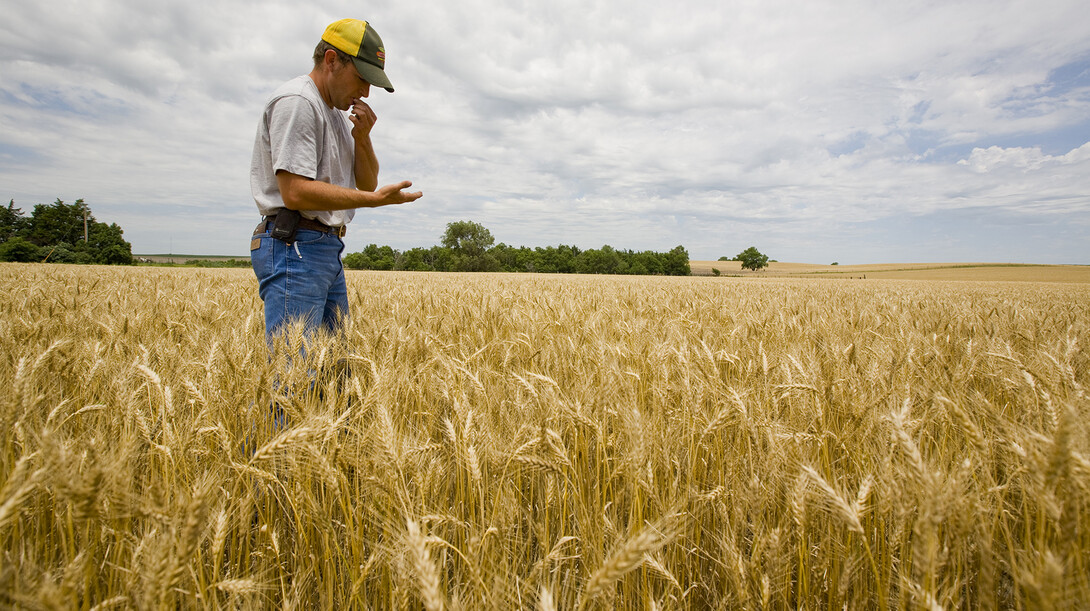
Nebraska’s farm income is predicted to drop nearly 45 percent this year, according to the latest long-term economic forecast produced by the Bureau of Business Research at the University of Nebraska–Lincoln.
The three-year forecast, produced in conjunction with the Nebraska Business Forecast Council, predicts 2015 Nebraska farm income of about $3.5 billion, its lowest level since 2009.
However, farm income is anticipated to stabilize at about $4 billion in 2016 and 2017, while moderate growth is predicted for the state’s other economic sectors. Nonfarmers can anticipate personal income growth at a “solid” rate of up to 4 percent a year through 2017— although inflation is expected to jump as high as 2.2 percent during the same period.
“Wage and salary income growth will accelerate between 2015 and 2016 as inflation rises,” said Eric Thompson, a UNL economist and director of the Bureau of Business Research. “Further, as the job market improves, there will be real hourly wage growth — although benefits will grow somewhat more slowly as employers shift more health care costs onto their employees.”
The farm sector has faced a significant drop in crop prices from record high levels two years ago. In June 2013, corn sold for $7.05 per bushel in Nebraska City, according to the Cornhusker Economics newsletter. In June this year, it sold for less than half that amount, $3.43 per bushel. Soybean prices dropped 37 percent and wheat dropped 34 percent during the same two-year period.
In January, the bureau had predicted only a 7 percent drop for 2015 farm income. Its July revision results in part from crop prices that dropped even more than anticipated, as well as farmers’ decisions last year to hold on to more of their 2014 crop to wait for better prices. The additional grain held in inventory in effect staved off some of 2014’s income losses until 2015.
The destruction of some 5 million chickens to stem the spread of bird flu and the 2014 Farm Bill’s reduction in government payments also will reduce farm income in 2015.
The sector, however, should regain some lost ground in 2016 and 2017, with livestock revenues remaining strong and grain inventories stabilizing.
“Farm incomes will decline sharply in 2015 as crop and livestock prices moderate,” Thompson said. “Farm incomes then will stabilize in 2016 and 2017.”
Other forecast highlights:
Jobs: Though Nebraska’s modest population growth and low unemployment will hamper job growth compared to the nation as a whole, it is expected to add 12,000 jobs a year to its economy through 2017, an annual increase of about 1.2 percent.
Services: Half of the new jobs will come in the services sector, which is anticipated to add about 6,000 jobs a year between 2014 and 2017. Professional and business services will benefit from the steady expansion of commercial activity, while population and income growth will lead to more health care jobs. Lower gasoline prices and a growing entertainment sector will add more jobs in the hospitality industry.
Construction: Fueled in part by a gas tax increase and earmarked state funds for road construction, the construction sector should experience the fastest rate of job growth, at 4.5 to 5 percent through 2017. The sector also will benefit from an improved housing market, commercial growth and public-sector projects. The sector is predicted to employ nearly 54,000 by 2017, an increase of nearly 7,000 compared to 2014.
Manufacturing: Nebraska manufacturing will be one of the slower growing sectors in terms of jobs. Although Nebraska manufacturers won’t be as hard hit by the slowdown in the U.S. oil and gas industry, the sector will be constrained by a limited supply of skilled workers at prevailing competitive wages, as well as by falling farm incomes that will cool demand for farm equipment.
Government: State and local government spending and employment should grow because of the state’s strong fiscal situation, rising property values and the recent expansion of Nebraska’s Real Property Tax Credit.
For a detailed look at the forecast, visit the Bureau of Business Research web page.







